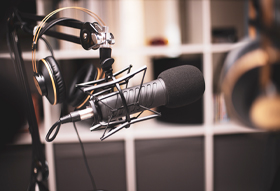
Portable sound isolation shields

Working from home has thrown a number of challenges to those individuals who are typically used to working in an office or studio setting. From customer service agents to podcast hosts and broadcasters, we have all needed to adapt to our new working environment. For those of us who need a specialist environment to accommodate certain types of equipment, we have needed to be creative when finding a solution.
Many of these innovative solutions have been shared on social media. For example, radio broadcasters working from home have needed to record their news segments but have not been equipped with the right soundproofing technology to ensure a clear recording. To solve this issue, many have been recording very close to their microphone with a bath towel over their head in an attempt to reduce echo within a space! Of course, this isn’t wholly practical and does not offer the highest recording quality needed for professional broadcasting and podcast recording.
Although there are many permanent solutions for soundproofing a space, doing so takes considerable time and investment. Furthermore, given that many are planning to return to their office and studio when they can, a permanent acoustic foam installation is unnecessary – particularly for those who are working in communal areas such as a kitchen or living room, where on-wall acoustic foam panels would not be effective or necessary. Instead, there is a simple portable solution that can be created with little time investment and quality cost-efficient materials from eFoam.
All it takes to create a simple at-home acoustic solution is three foam panels. Of course, this foam must be an acoustic foam grade. Depending on your set up, your panels will vary in size. For example, if you typically sit at a dining table with a microphone placed in front of you, and don’t tend to record anywhere else other than this space, we’d recommend ordering three panels that are 45cm in height and 30cm wide. Most importantly, ensure that the height of your panels is greater than the overall height of your microphone on a desk, otherwise it won’t be effective!

Should you wish to create a more portable acoustic solution that can be easily folded up and transported to any location, we’d recommend selecting three panels that are cut to size at approximately 30cm high and 20cm wide. Although this will create a smaller enclosure when folded out into a semi-circle like shape, it will still offer a substantial recording experience. For best results, ensure your face is directly in line with the height of the microphone when recording.
Your three panels can be secured together with four lightweight plastic hinges that can be sourced from any local DIY store. Do not use metal hinges as these are too heavy for foam. Ensure that these are attached with a sufficient amount of distance to ensure that the three panels fold on top of each other when packed away. For this reason, it may be best to seek extended plastic hinges that accommodate for this. To ensure the bottom of your shields remain in place, use adhesive to attach several small gripper mats alongside one of the bottom edges.
Should you wish to read more on acoustic soundproofing, read our blog post. Otherwise please do contact our friendly advisers should you have any questions.

